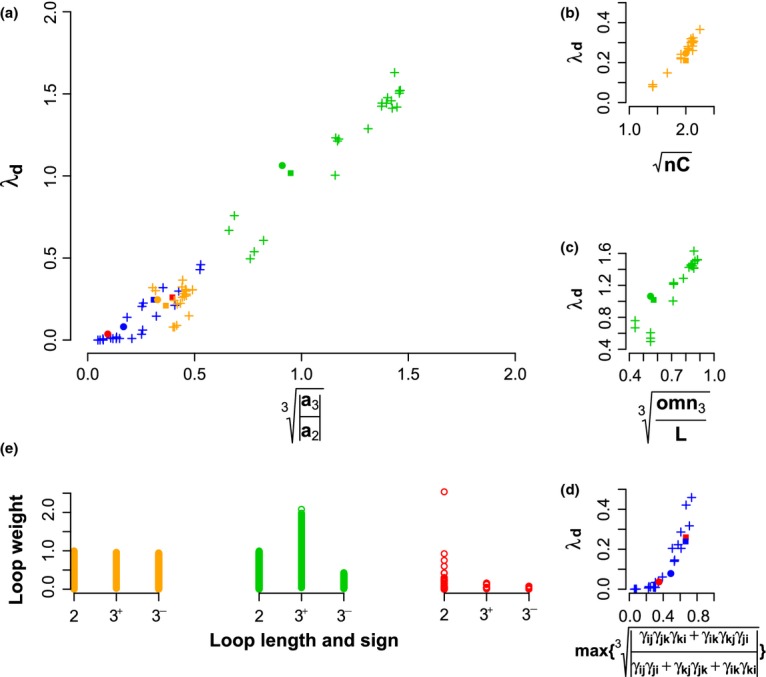Figure 4.

Feedbacks and stability. Empirical parameterisations of the interaction strengths of the Antarctic dry and wet tundra systems and 21 soil food webs (for legend see Fig. 3, with plus signs for the 21 soil webs) are compared with symmetric (yellow symbols) and asymmetric (green symbols) parameterisations. (a) 3-Link and 2-link predator-prey feedbacks  and system vulnerability λd (N = 71, R2 = 0.97, P < 10−15). λd is correlated with (b) complexity
and system vulnerability λd (N = 71, R2 = 0.97, P < 10−15). λd is correlated with (b) complexity  in the symmetric webs (N = 23, R2 = 0.94, P < 10−13), (c) the level of omnivory
in the symmetric webs (N = 23, R2 = 0.94, P < 10−13), (c) the level of omnivory  (N = 23, R2 = 0.84, P < 10−9) in the asymmetric webs, and (d) maximum ratio of 3-link and 2-link feedback in omnivorous structures (N = 25, R2 = 0.79, P < 10−08) in the empirical webs. (e) Weights (Neutel et al. 2002) of 2- and 3-link feedback loops in the Antarctic dry tundra for the different parameterisations. The spectra are representative of the other food webs and the symmetric and asymmetric spectra contain the 2- and 3-link feedbacks of 100 samplings of those parameterisations.
(N = 23, R2 = 0.84, P < 10−9) in the asymmetric webs, and (d) maximum ratio of 3-link and 2-link feedback in omnivorous structures (N = 25, R2 = 0.79, P < 10−08) in the empirical webs. (e) Weights (Neutel et al. 2002) of 2- and 3-link feedback loops in the Antarctic dry tundra for the different parameterisations. The spectra are representative of the other food webs and the symmetric and asymmetric spectra contain the 2- and 3-link feedbacks of 100 samplings of those parameterisations.
